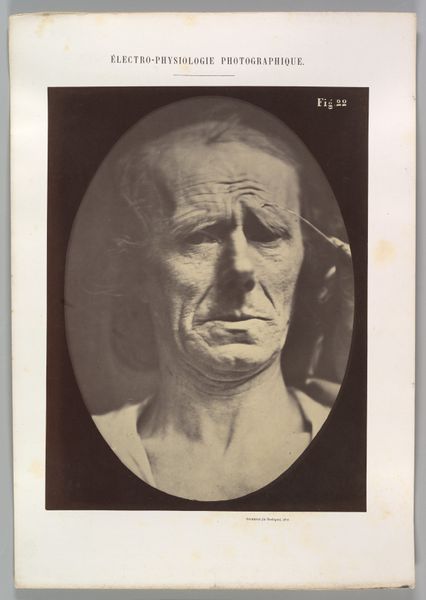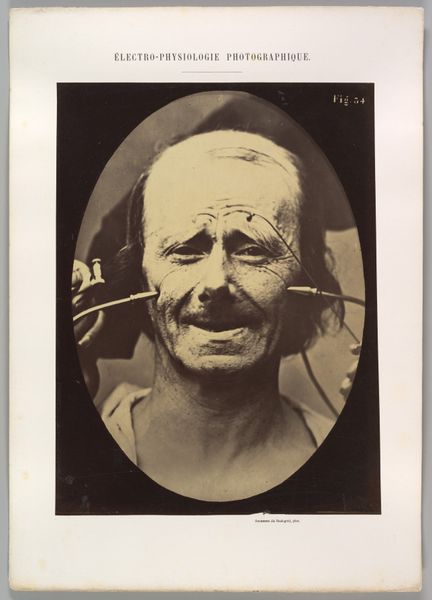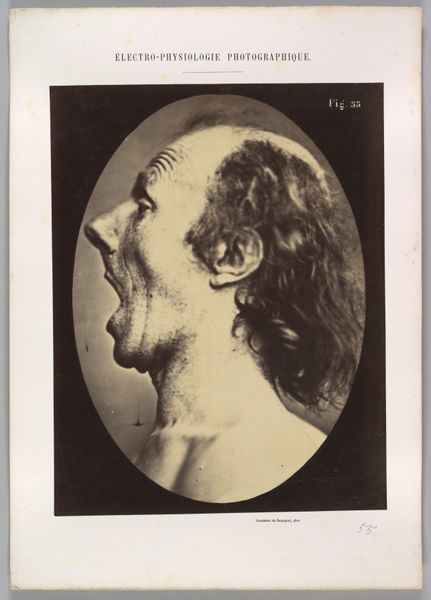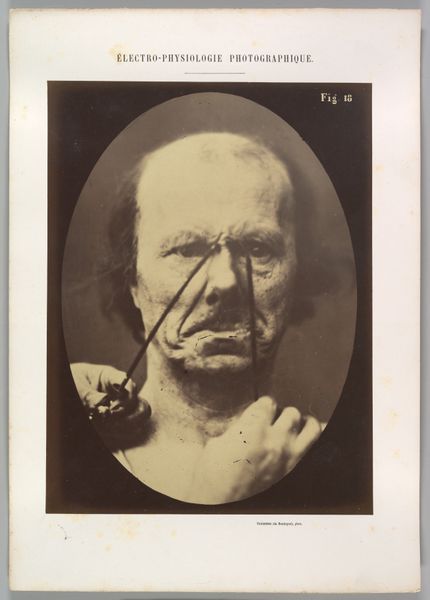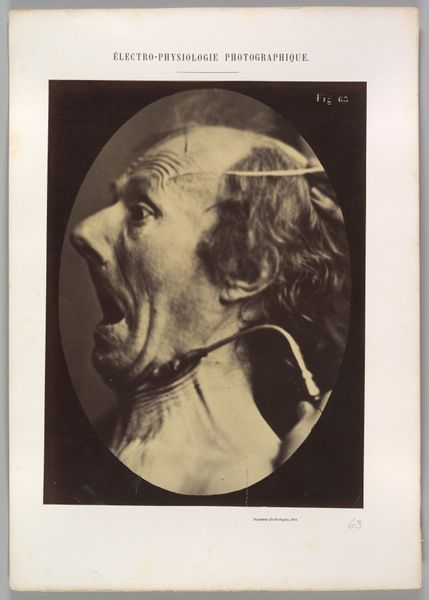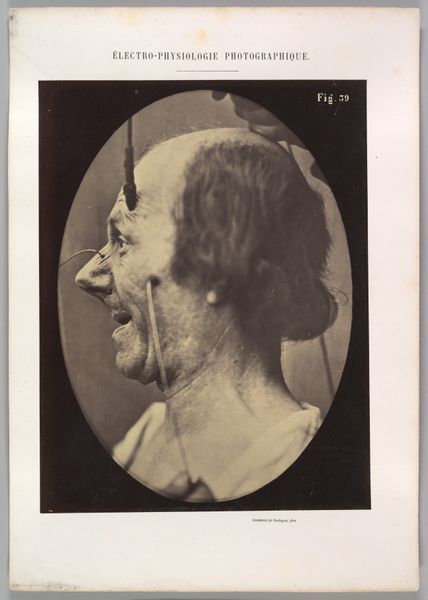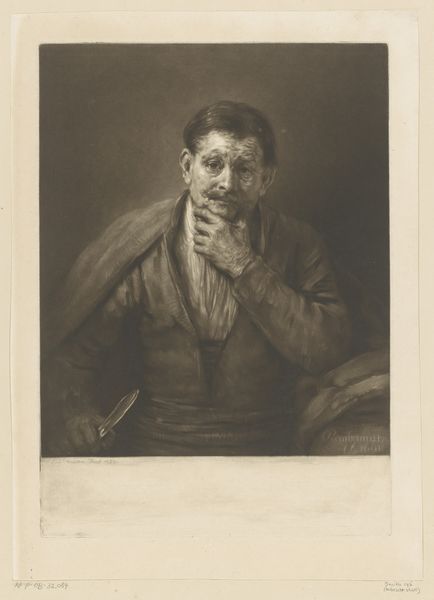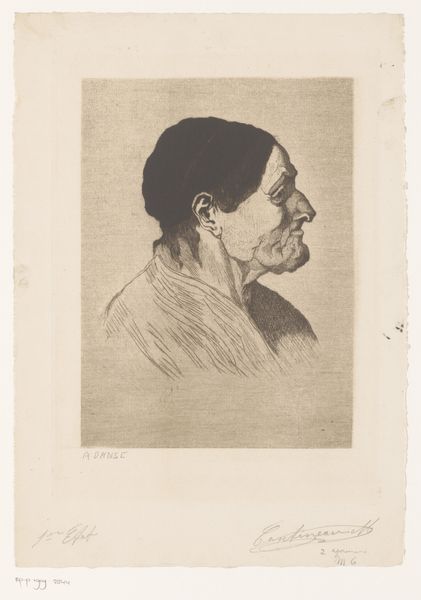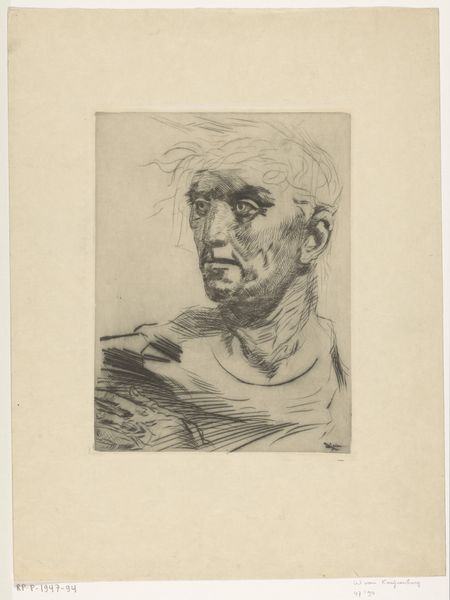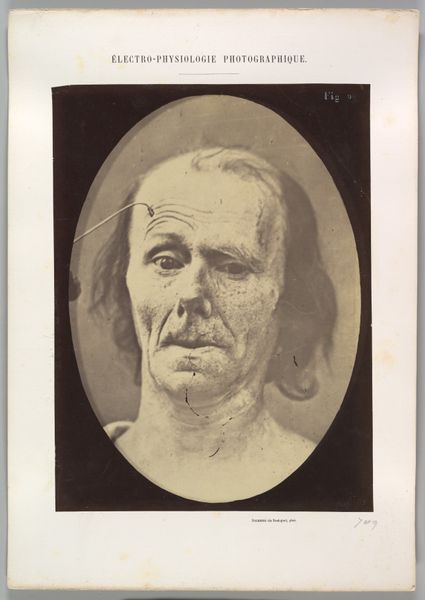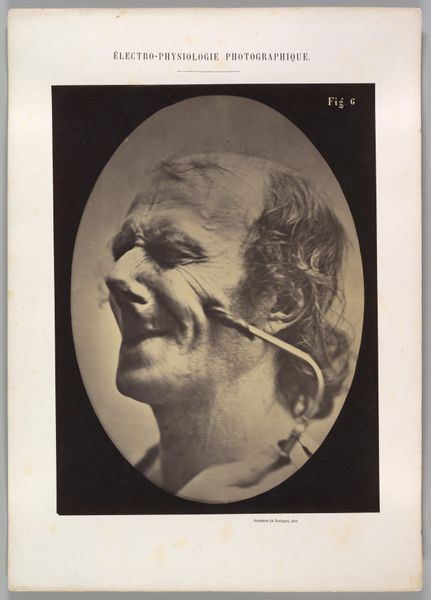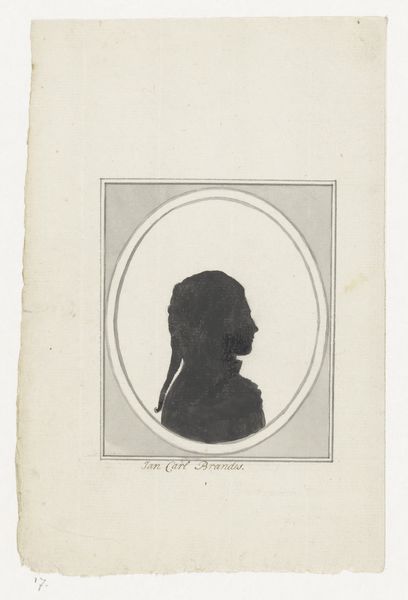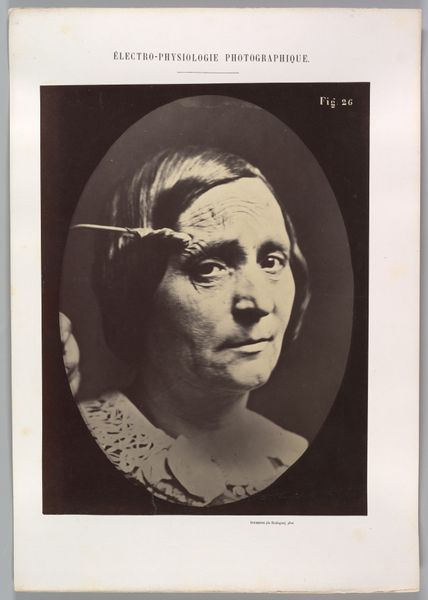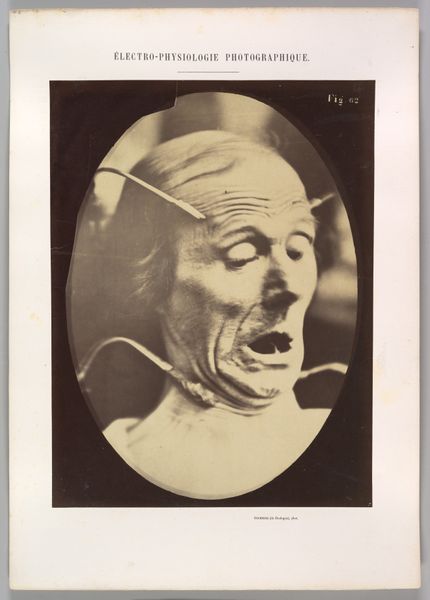
Figure 42: Gaiety expressed by the ideas of lustfulness, cynicism, and lewdness. 1854 - 1856
0:00
0:00
daguerreotype, photography
#
portrait
#
daguerreotype
#
photography
#
academic-art
Dimensions: Image (Oval): 28.6 × 20.3 cm (11 1/4 × 8 in.) Sheet: 29.9 × 22.4 cm (11 3/4 × 8 13/16 in.) Mount: 40.2 × 28.4 cm (15 13/16 × 11 3/16 in.)
Copyright: Public Domain
This is one of Guillaume Duchenne’s photographs, part of his study into the physiology of facial expressions. Duchenne was working in a time when there were serious debates about race, gender, and class. The image features an older man with wires connected to his face; Duchenne used electric probes to stimulate facial muscles. Duchenne believed that he could isolate and identify the specific muscles responsible for different emotional expressions. He classified these expressions within a framework that reflected 19th-century notions about mental illness and social deviance. The man’s features—his age, and his somewhat disheveled appearance—might have contributed to how Duchenne interpreted his expressions. The expressions that are evoked through this method are artificial, almost performative. What does it mean to look at a face contorted to express a culturally determined and scientifically imposed idea of gaiety? Are we seeing science, or a staged drama of emotion? Ultimately, Duchenne’s work prompts us to consider how we project our own biases onto others and to think about the ethics of manipulating and categorizing human emotions.
Comments
No comments
Be the first to comment and join the conversation on the ultimate creative platform.
